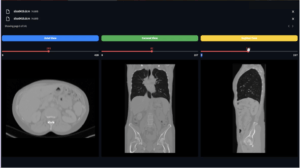Machine Learning Tutorials

Abstract
As one of the most popular machine learning algorithms, backpropagation is used everywhere. It is used for solving a variety of problems that are related to classification, regression, clustering, linear regression, ranking and more.
Backpropagation is a technique that helps in training machines to make predictions with high accuracies. It has been mostly used in supervised machine learning where there are labelled data sets available.
The basic idea of backpropagation algorithm is to train the algorithm using the input data and then use it on new data which has not been labelled or processed by any other algorithm yet.
What is Backpropagation?
Backpropagation is a process of training machine learning algorithms. This process allows the machine to learn from mistakes and improve its performance. The main idea of backpropagation is that the ordering of computing operations determines the order in which a neural network learns.
The main steps in backpropagation are:
1) Forward propagation: Used to estimate a particular machine’s skill level based on inputs and outputs, then compute a cost function that expresses how well it performs at that level
2) Backward propagation: Used to compute the gradient for each parameter update based on all previous values of this parameter computed during forward propagation
What are the Pros & Cons of the Method
The back propagation training algorithm is the most widely used machine learning method. It is also one of the most difficult methods to implement.
The main advantage of this method is that it can make predictions with less data by making use of backward predictions. This means that this method will not require a lot of data to predict something accurately.
The disadvantage is that it can be very costly since there are many calculations required for each step involved in making a prediction, which leads to high computational power requirements.
What Makes Backpropagation Successful?
In order to understand why back propagation is successful, we need to take a look at how the algorithm works as well as the differences between supervised and unsupervised learning.
The success of back propagation can be attributed to its ability to adapt and explore different solutions by repeatedly reducing the error for a given input sequence. After a few iterations, it should converge on a solution that minimizes the error for all inputs.
In general, back propagation is used when there are multiple outputs from which an optimal value must be found. In addition, it may also be used when data is collected from an environment that can change over time or where there are no exact correct answers.
Why Use Backpropagations in Machine Learning
Backpropagation is a computational procedure for computing gradients of the cost function with respect to the parameters in multivariate linear regression. The machine learning algorithm is then initialized by minimizing the cumulative update error.
The machine learning algorithm is then initialized by minimizing the cumulative update error.



